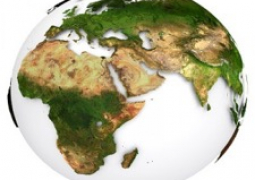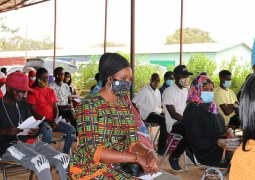
In the Gambia like all nations, drug abuse is seen as a social and health problem that has many serious implications for the physical, social, psychological and intellectual development of the victims more especially, the children.
Therefore, it continues to be a concern to families, community leaders, educators, social workers, health care professionals, academics, government and its development partners. Though there are some studies on drug abuse, there is none on children and drug abuse focusing on the street children the most vulnerable category.
Street children are hypothesized to be more at risk of any epidemic including drug abuse.
This study sought to determine the risk and prevalence of drug abuse among street children focusing on those in the car parks.
The research was focused on six critical areas: level of knowledge of drug abuse, perception towards it, level of knowledge of the causes of it in the community and among street children, level of knowledge of negative impacts of it, level of knowledge of the preventive methods; and level of knowledge of the support services and treatments needed by victims.
A structured questionnaire was used to collect the data from thirty-five participants (i.e. one driver and six casual apprentices from each of the five car parks) were interviewed.
The data was presented and analyzed using tables and percentage.
The findings revealed among other things, that there is high level of awareness of drug abuse but the feelings towards it are mixed.
Like other children, street children are abusing drugs mainly due to peer influence with the ultimate objective of getting high to relief stress, group recognition, desire to be trusted by peers, etc.
Similarly, participants are highly aware of the negative impacts encompassing fighting, stealing, mental illness, etc.
To finance the behavior, victims are engaged in all types of dangerous antisocial behavior including romantic ones exposing them to a range of diseases including STIs and HIV/AIDS.
In 2015 about a quarter of a billion people used drugs, United Nations Office on Drugs and Crime (UNODC) [3] In 2016, according to UN 250 million people between the ages of 15 and 64 used at least one drug in 2014 and more than 29 million are suffering drug use disorders compared with 27 million in 2013.
Of the 12 million people who inject drugs 14% are now living with HIV.
Africa now occupies second position worldwide in the trafficking and consumption of illegal drugs.
The UN estimate in 2014, there were 28 million drug users in Africa and 37,000 people die annually from diseases associated with the consumption of illegal drugs.
The children are identified as the most vulnerable, especially those who cannot resist peer pressure.
Therefore, it seems drug addiction has reached epidemic levels across the world and the spectrum of the drug on the drug market has widened considerably, becoming one of the social problems that affect everyone, everywhere, either directly or indirectly and children are no exception.
Children are a valuable asset and pride, not only to their family but to the nation.
Similarly, today’s children are tomorrow’s adults and builders of the nations and deserves all protection from the menace Singh B et al. [6]. Therefore, the use of substances
Source-Gambia Youth News





